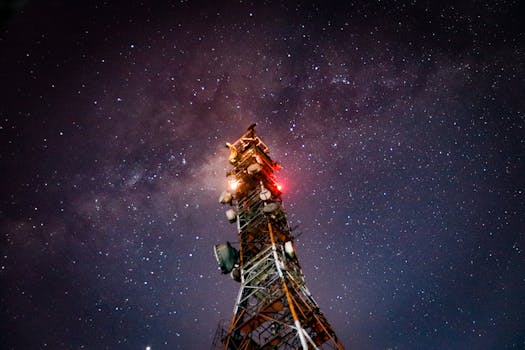Starlink: Revolutionizing Global Internet Connectivity with Satellite Technology

Starlink: Revolutionizing Global Internet Connectivity with Satellite Technology
Starlink is a groundbreaking satellite constellation developed by SpaceX, founded by Elon Musk, with the ambitious goal of providing high-speed, low-latency internet connectivity to every corner of the globe. This innovative technology has the potential to bridge the digital divide, transform the way we communicate, and revolutionize the global internet landscape.
The concept of Starlink was first announced in 2015, and since then, SpaceX has been working tirelessly to develop and launch a network of low-Earth orbit (LEO) satellites that can provide fast and reliable internet connectivity. The satellite constellation is designed to comprise thousands of small satellites, each weighing around 260 kilograms, which will be launched into orbit using SpaceX’s reusable Falcon 9 rockets.
One of the key advantages of Starlink is its ability to provide internet connectivity to remote and underserved areas, where traditional fiber-optic cables and cell towers are often unavailable. The satellite constellation can reach even the most isolated communities, providing them with access to the same high-speed internet services enjoyed by urban populations. This has the potential to bridge the digital divide, enabling people in rural and remote areas to access essential services, education, and economic opportunities.
Starlink’s technology is also designed to provide low-latency internet connectivity, which is critical for real-time applications such as online gaming, video streaming, and virtual reality. The satellite constellation uses advanced beamforming and phased array technologies to provide high-gain, directional beams that can focus internet signals on specific areas, reducing latency and increasing data transfer rates.
How Starlink Works
Starlink’s satellite constellation operates in the Ku and Ka frequency bands, using a combination of satellite and ground-based technologies to provide internet connectivity. The system consists of three main components: the satellites, the ground stations, and the user terminals. The satellites are equipped with advanced transponders that receive and transmit internet signals, which are then relayed to the ground stations through a network of gateways.
The ground stations, also known as gateways, are responsible for connecting the satellite constellation to the global internet backbone. They use advanced beamforming and phased array technologies to communicate with the satellites, ensuring high-gain, directional signals that minimize latency and maximize data transfer rates. The user terminals, which are small, compact devices that can be installed at homes, schools, or businesses, use similar technologies to communicate with the satellites, providing users with fast and reliable internet connectivity.
Benefits and Applications of Starlink
Starlink has numerous benefits and applications, ranging from bridging the digital divide to enabling critical communications during emergencies and disasters. Some of the key benefits of Starlink include:
Improved internet connectivity: Starlink provides high-speed, low-latency internet connectivity to remote and underserved areas, enabling people to access essential services, education, and economic opportunities.
Disaster response and recovery: Starlink’s satellite constellation can provide critical communications during emergencies and disasters, enabling first responders to coordinate their efforts and respond to emergencies more effectively.
Rural development: Starlink can enable rural communities to access high-speed internet, facilitating the growth of local businesses, improving access to education and healthcare, and enhancing overall quality of life.
Environmental monitoring: Starlink’s satellite constellation can be used to monitor environmental changes, track climate patterns, and predict natural disasters, enabling scientists and policymakers to make informed decisions about conservation and sustainability.
Challenges and Limitations of Starlink
While Starlink has the potential to revolutionize global internet connectivity, it also faces several challenges and limitations. Some of the key challenges include:
Regulatory hurdles: Starlink must comply with complex regulatory requirements, including obtaining licenses and permits from national and international authorities.
Technical challenges: Starlink’s satellite constellation must overcome technical challenges, such as signal attenuation, interference, and latency, to provide reliable and high-speed internet connectivity.
Cost and affordability: Starlink’s services may be expensive, particularly for low-income households and communities, which could limit its adoption and accessibility.
Security concerns: Starlink’s satellite constellation may be vulnerable to cyber threats and security breaches, which could compromise the integrity and confidentiality of user data.




